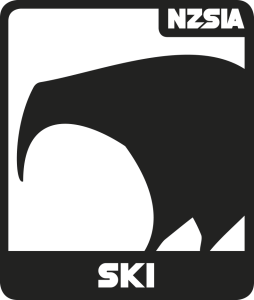Parallel Release; Outside Ski Focus
 What, Why, How
What, Why, How
What
The skis should maintain a parallel relationship throughout the whole turn, weight shift happens from the very beginning of the turn.
Why
Skiing parallel is more biomechanically natural and comfortable than skiing in a wedge. Parallel skiing is the goal of many skiers. Once mastered, parallel turns open up an increased variety of turn sizes and terrain for skiers.
How
Focus on a positive foot-to-foot weight shift that is timed so that the skier is already balanced on the middle of their new outside ski as their centre of gravity (COG) moves back above their feet.
VIDEO: Parallel Turns with Josh Duncan-Smith
 Technical Know-how
Technical Know-how
What’s New
Skiing with a parallel relationship throughout the whole turn, from start to finish.
Performance Tips
Body: Focus on a weight shift from the old outside foot to the new outside foot during the release phase of the turn.
Turn phases: The release phase of the turn becomes slightly longer to facilitate the weight shift from outside ski to outside ski before the start of the new turn.

Skills
Situational Understanding
- Increase the speed of travel, allowing the skis to remain parallel from the very beginning of the turn
- Use blue terrain or terrain the student is comfortable on
- Develop awareness of the benefits of a parallel stance from the start of the turn
Active Stance & Balance
- A pedalling motion (flexion, extension) of the legs will aid the weight shift to the new outside ski
- Extension of the new outside leg will bring the COG over the BOS aligning to the direction of travel
- Moving forward with the skis to ensure the skier maintains centred balance over the new outside ski through the create phase of the turn
Outside Ski Balance
- A positive foot-to-foot weight shift to balance on the new outside ski will happen as the skis are flattening
- Outside ski balance is now maintained throughout the whole turn
Edging
- The edges will flatten simultaneously, while balance is established on the new outside ski
Steering
- Both skis will steer together at the same rate keeping the skis parallel throughout the whole turn
- Both legs will rotate together at the same rate throughout the whole turn
Ski Snow Interaction
- Both skis will create matching steering angles from the beginning of the turn. These angles will increase until the middle of the control phase where they will be maintained until the end of the turn
- The edge angle of both skis will increase throughout the turn and release simultaneously
- The platform angle will reach 90 degrees at the end of the control phase in a parallel turn. This creates more grip and a slight groove for the skis to travel along as they release and helps the skier flatten both skis simultaneously
 Teaching Tactics
Teaching Tactics
Terrain
Ideally will be introduced on comfortable blue terrain.
Class Handling
The positive foot-to-foot can only be experienced with the correct timing when your students are moving and have momentum. Make sure to keep explanations concise and keep the students moving.
Example Activities
- Goal to start turns with skis parallel, try it
- Develop awareness of the timing of the current foot-to-foot weight shift
- Talk, show desired new timing of weight shift
- Highlight that legs are already getting shorter and longer - vertical movement
- Talk, show, feel the muscles that are used in the legs
- Encourage the upcoming outside leg to be actively “engaged” so it becomes the new outside leg
- “Tap tap engage”
- Encourage students to move forward to make sure that they’re balanced in the centre of the new outside ski

